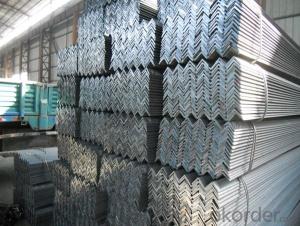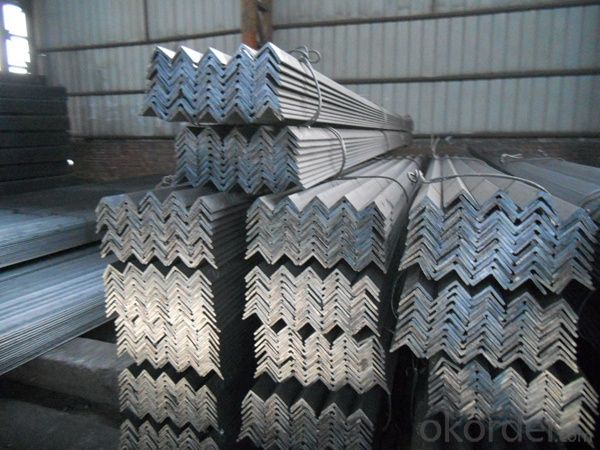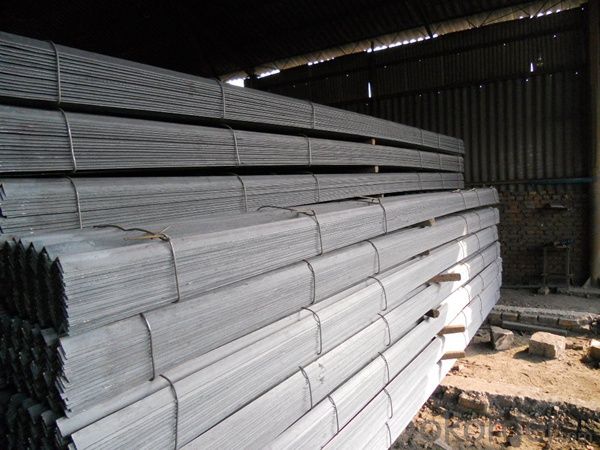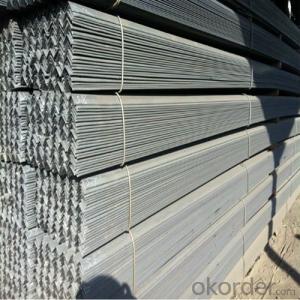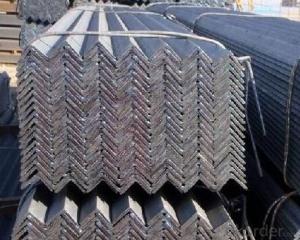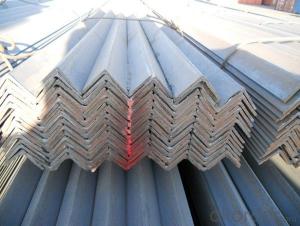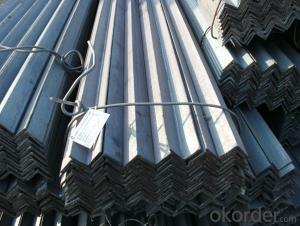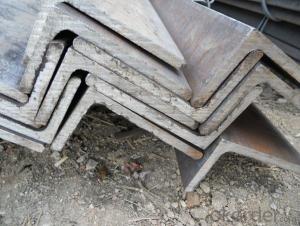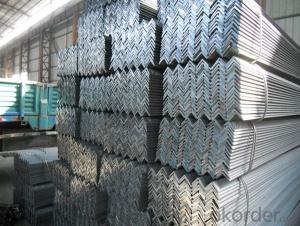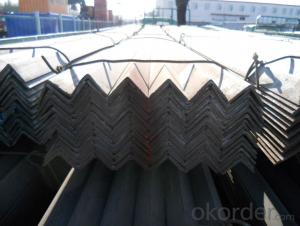Steel Angle Beams for Structure of Construction
- Loading Port:
- Tianjin
- Payment Terms:
- TT or LC
- Min Order Qty:
- 25 m.t.
- Supply Capability:
- 200000 m.t./month
OKorder Service Pledge
OKorder Financial Service
You Might Also Like
Product Description:
OKorder is offering Steel Angle Beams for Structure of Construction at great prices with worldwide shipping. Our supplier is a world-class manufacturer of steel, with our products utilized the world over. OKorder annually supplies products to African, South American and Asian markets. We provide quotations within 24 hours of receiving an inquiry and guarantee competitive prices.
Product Applications:
Steel Angle Beams for Structure of Construction are ideal for structural applications and are widely used in the construction of buildings and bridges, and the manufacturing, petrochemical, and transportation industries.
Product Advantages:
OKorder's Steel Angle Beams for Structure of Construction are durable, strong, and wide variety of sizes.
Main Product Features:
· Premium quality
· Prompt delivery & seaworthy packing (30 days after receiving deposit)
· Can be recycled and reused
· Mill test certification
· Professional Service
· Competitive pricing
Product Specifications:
Manufacture: Hot rolled
Grade: Q195 – 235
Certificates: ISO, SGS, BV, CIQ
Length: 6m – 12m, as per customer request
Packaging: Export packing, nude packing, bundled
EQUAL ANGLES SIZES | |||
a(mm) | a1(mm) | thickness(mm) | length |
25 | 25 | 2.5---3.0 | 6M/12M |
30 | 30 | 2.5---4.0 | 6M/12M |
38 | 38 | 2.5 | 6M/12M |
38 | 38 | 3.0---5.0 | 6M/12M |
40 | 40 | 3.0---6.0 | 6M/12M |
50 | 50 | 3 | 6M/12M |
50 | 50 | 3.7---6.0 | 6M/9M/12M |
60 | 60 | 5.0---6.0 | 6M/9M/12M |
63 | 63 | 6.0---8.0 | 6M/9M/12M |
65 | 65 | 5.0---8.0 | 6M/9M/12M |
70 | 70 | 6.0---7.0 | 6M/9M/12M |
75 | 75 | 5.0---10.0 | 6M/9M/12M |
80 | 80 | 6.0---10.0 | 6M/9M/12M |
90 | 90 | 6.0---10.0 | 6M/9M/12M |
100 | 100 | 6.0---12.0 | 6M/9M/12M |
120 | 120 | 8.0-12.0 | 6M/9M/12M |
125 | 125 | 8.0---12.0 | 6M/9M/12M |
130 | 130 | 9.0-12.0 | 6M/9M/12M |
140 | 140 | 10.0-16.0 | 6M/9M/12M |
150 | 150 | 10---15 | 6M/9M/12M |
160 | 160 | 10---16 | 6M/9M/12M |
180 | 180 | 12---18 | 6M/9M/12M |
200 | 200 | 14---20 | 6M/9M/12M |
Trademark | Rank | Chemical composition (quality score) % | |||||
C | Si | Mn | S | P | |||
≤ | ≤ | ≤ | |||||
Q235 | A | 0.14-0.22 | 0.30 | 0.30-0.65 | 0.050 | 0.045 | |
Q235 | B | 0.12-0.20 | 0.30 | 0.30-0.70 | 0.045 | 0.045 | |
Trademark | Rank | Pulling Test | |||||
Bend PointΔs/Mpa | Tensile Strength | Elongation Ratioδ5% | |||||
Thickness (Diameter) /MM | Thickness (Diameter) /MM | ||||||
≤16 | 16-40 | ≤16 | 16-40 | ||||
≥ | ≥ | ||||||
Q235 | A | 235 | 225 | 375-500 | 26 | 25 | |
Q235 | B | 235 | 225 | 375-500 | 26 | 25 | |
FAQ:
Q1: Why buy Materials & Equipment from OKorder.com?
A1: All products offered byOKorder.com are carefully selected from China's most reliable manufacturing enterprises. Through its ISO certifications, OKorder.com adheres to the highest standards and a commitment to supply chain safety and customer satisfaction.
Q2: How soon can we receive the product after purchase?
A2: Within three days of placing an order, we will arrange production. The normal sizes with the normal grade can be produced within one month. The specific shipping date is dependent upon international and government factors, the delivery to international main port about 45-60days.
Q3: How many tons of steel products could be loaded in containers?
A3: Usually the steel products are delivered by bulk vessel because of the large quantity and the freight. However, there are no bulk vessel enter some seaports so that we have to deliver the cargo by containers. The 6m steel product can be loaded in 20FT container, but the quantity is changed according to the size, usually from 18tons to 25tons.
Images:
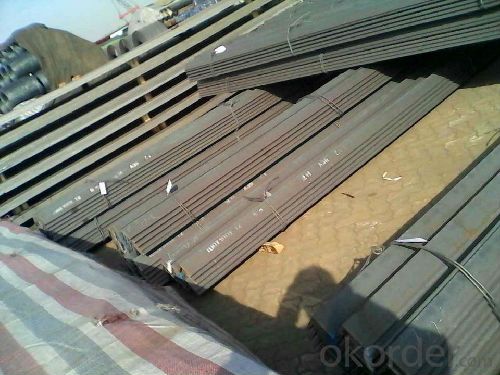
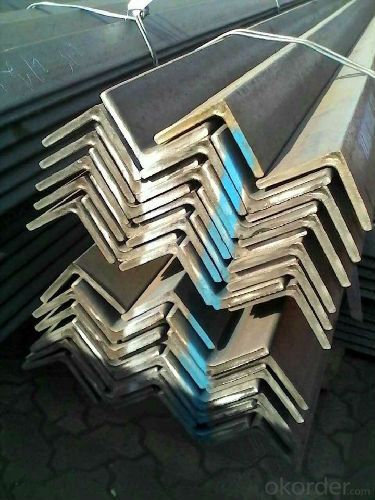
- Q: How do steel angles perform in extreme temperatures?
- Steel angles perform well in extreme temperatures due to their high strength and excellent heat resistance. They retain their structural integrity and do not easily deform or become brittle under extreme heat or cold conditions. This makes steel angles a reliable choice for various applications in industries such as construction, manufacturing, and engineering, where exposure to extreme temperatures is common.
- Q: How do you calculate the bending moment of a loaded steel angle?
- To calculate the bending moment of a loaded steel angle, you need to determine the applied load and the distance from the load to the point of interest on the angle. Then, multiply the load by the distance to obtain the bending moment. This calculation helps determine the strength and stability of the angle under the applied load.
- Q: How do steel angles perform in extreme weather conditions?
- Steel angles have been specifically engineered to possess a remarkable level of durability and resistance towards severe weather conditions. Due to their exceptional strength and ability to endure harsh environments, they are commonly employed in construction and structural applications. When confronted with extreme weather events such as hurricanes, heavy snowfall, or strong winds, steel angles offer exceptional protection against these elements. The superior tensile strength of steel angles plays a pivotal role in their performance during extreme weather conditions. Their capacity to withstand significant loads and forces without distorting or fracturing makes them an ideal choice for enduring severe weather events. Moreover, steel angles are well-regarded for their outstanding resistance towards corrosion, a crucial attribute in areas characterized by high humidity, saltwater, or acidic surroundings. Another noteworthy aspect of steel angles is their remarkable versatility, as they can be easily fabricated and tailored to meet the specific requirements of a project. This adaptability ensures their suitability for a wide array of applications, including buildings, bridges, towers, and other structures that are exposed to extreme weather conditions. Furthermore, steel angles can be coated or treated to further enhance their resistance towards adverse weather conditions. For instance, the application of a galvanized coating can furnish additional protection against rust and corrosion, thereby prolonging the lifespan of the steel angles, even under the harshest weather conditions. In conclusion, steel angles have been meticulously designed to deliver exceptional performance in extreme weather conditions. Their remarkable tensile strength, corrosion resistance, and versatility establish them as a dependable choice for structures necessitating the ability to withstand hurricanes, heavy snowfall, strong winds, and other challenging weather events.
- Q: What are the common uses for steel angles?
- Steel angles are commonly used in construction and engineering projects for various purposes such as providing structural support, bracing or reinforcing structures, framing walls and ceilings, creating edges or corners, and forming joints and connections between different components.
- Q: What is the minimum radius for a curved steel angle beam?
- The minimum radius for a curved steel angle beam depends on various factors such as the material thickness, type of steel, and the specific design requirements. However, there are generally accepted guidelines to follow when considering the minimum radius for a curved steel angle beam. As a rule of thumb, the minimum radius for a curved steel angle beam is typically determined by the bending capacity of the steel material being used. The bending capacity is influenced by the yield strength, tensile strength, and the section properties of the steel angle beam. To calculate the minimum radius, it is necessary to consider the bending stress induced in the steel angle beam. The bending stress is a function of the applied load, the curvature radius, and the section properties of the beam. By ensuring that the bending stress does not exceed the allowable stress limits of the steel material, a safe minimum radius can be established. It is important to consult relevant design codes and standards, such as the American Institute of Steel Construction (AISC) Manual or the Eurocode, for specific guidelines and requirements regarding minimum radii for curved steel angle beams. These codes provide comprehensive information on the design and fabrication of curved steel members, including minimum radius limitations. Additionally, it is recommended to seek the assistance of a qualified structural engineer or a steel fabrication specialist who can perform the necessary calculations and analyses based on the specific project requirements.
- Q: Can steel angles be used for ladder rungs?
- Ladder rungs can indeed utilize steel angles, as they boast strength and durability, making them a frequent choice in construction and fabrication. Utilizing steel angles as rungs ensures a solid and secure surface for ladder climbing. Nonetheless, it is crucial to consider the precise requirements and regulations for ladder rungs, including dimensions, spacing, and anti-slip properties. These factors guarantee user safety and ladder stability. It is advisable to consult applicable safety guidelines and standards prior to employing steel angles as ladder rungs.
- Q: Can steel angles be used for machinery frames?
- Yes, steel angles can be used for machinery frames. Steel angles provide structural strength and stability, making them suitable for supporting heavy loads and absorbing vibrations in machinery frames.
- Q: What is the lifespan of a steel angle?
- The lifespan of a steel angle can vary depending on various factors such as the quality of the steel, the environment it is exposed to, and the level of maintenance it receives. However, in general, steel angles are known for their durability and long lifespan. With proper care and regular maintenance, a steel angle can last for several decades or even beyond. The corrosion resistance of the steel, protective coatings, and measures taken to prevent rust and deterioration can significantly extend its lifespan. Furthermore, factors such as load-bearing capacity, structural integrity, and overall design play a crucial role in determining the lifespan of a steel angle. Therefore, it is essential to consider the specific application and consult with professionals to ensure optimal performance and longevity.
- Q: What are the design standards for steel angles?
- The design standards for steel angles are typically governed by industry codes and standards, such as the American Institute of Steel Construction (AISC) Manual of Steel Construction or the European standard EN 10056. These standards outline the requirements for the dimensions, mechanical properties, and design capacities of steel angles, ensuring their safe and efficient use in structural applications.
- Q: Are steel angles suitable for high-temperature applications?
- No, steel angles are not suitable for high-temperature applications. Steel angles are typically made from carbon steel, which starts to lose its strength and structural integrity at elevated temperatures. At high temperatures, carbon steel undergoes a process called thermal expansion, where it expands and becomes weaker. This can lead to deformations and structural failures in the steel angles. For high-temperature applications, materials such as stainless steel or alloys with higher heat resistance, such as Inconel or Hastelloy, are more suitable. These materials can withstand higher temperatures without significant loss of strength and structural stability.
Send your message to us
Steel Angle Beams for Structure of Construction
- Loading Port:
- Tianjin
- Payment Terms:
- TT or LC
- Min Order Qty:
- 25 m.t.
- Supply Capability:
- 200000 m.t./month
OKorder Service Pledge
OKorder Financial Service
Similar products
Hot products
Hot Searches
Related keywords
